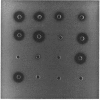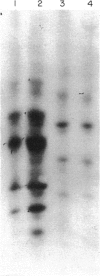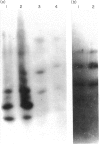Abstract
A sensitive ELISA assay was used to quantitate serum complement component C6 concentrations. Levels in the range 0.3-3 micrograms/ml were measured in samples from eight individuals (four separate pedigrees) and two subjects with subtotal combined C6/C7 deficiency who have been reported previously. We defined C6 levels in this range as subtotal C6 deficiency (C6SD). In contrast, C6 deficiency with levels below 0.03 micrograms/ml was defined as C6Q0. C6Q0 has been found in 29 unrelated cases which have already been reported. Investigations of the properties of the C6 found in the C6SD subjects showed it to be haemolytically active and able to incorporate into the terminal complement complex. The protein had a relative molecular weight (Mr) of approximately 86% of normal C6 and this Mr was identical to that of the C6 of one combined deficient subject. The Mr of the C6 of the other combined deficient subject was previously estimated as 79% of the Mr of normal C6. Isoelectric focusing (IEF) analysis with band development by haemolytic overlay revealed that all C6SD samples produced an identical weak C6 band pattern anodal to normal C6A bands. The C7 IEF patterns of the two combined deficient subjects were identical, and the C6 IEF patterns of both were identical to those of the C6SD subjects. Thus the C6 of the combined deficient subjects is probably the same abnormal protein found in the C6SD individuals. None of the C6SD or combined deficient subjects have had meningococcal disease and it may be that low C6 levels afford some protection.
Full text
PDF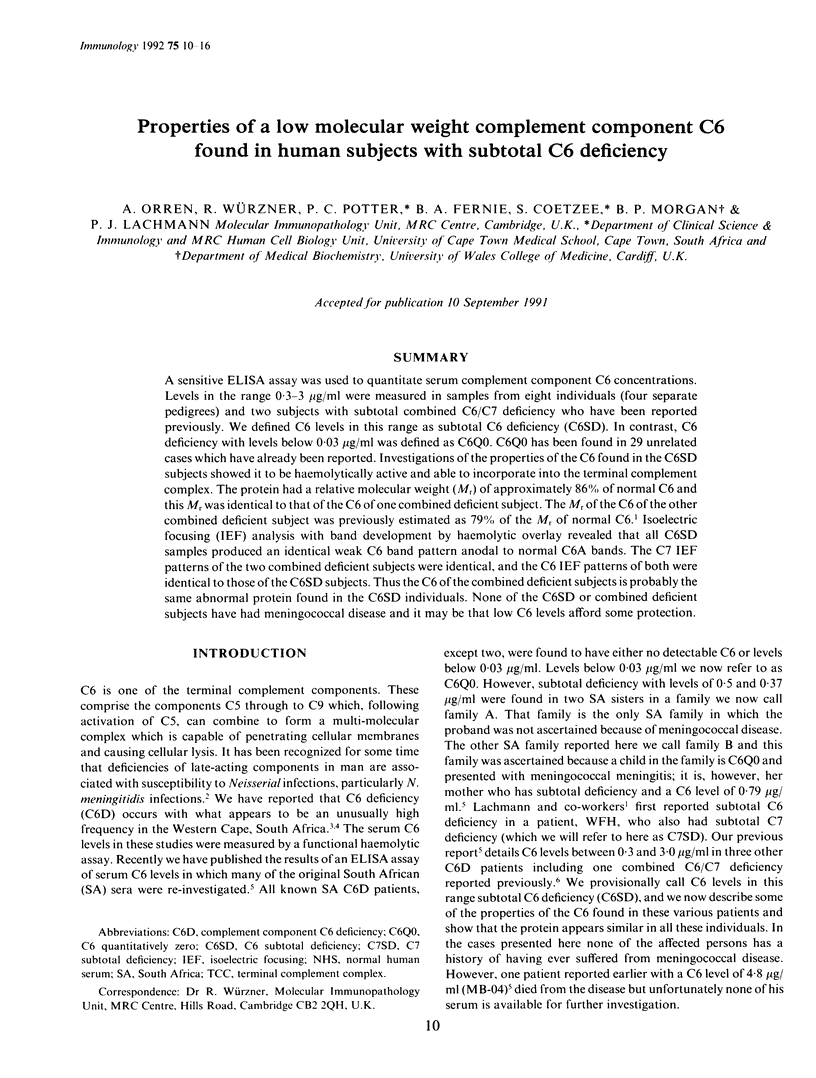
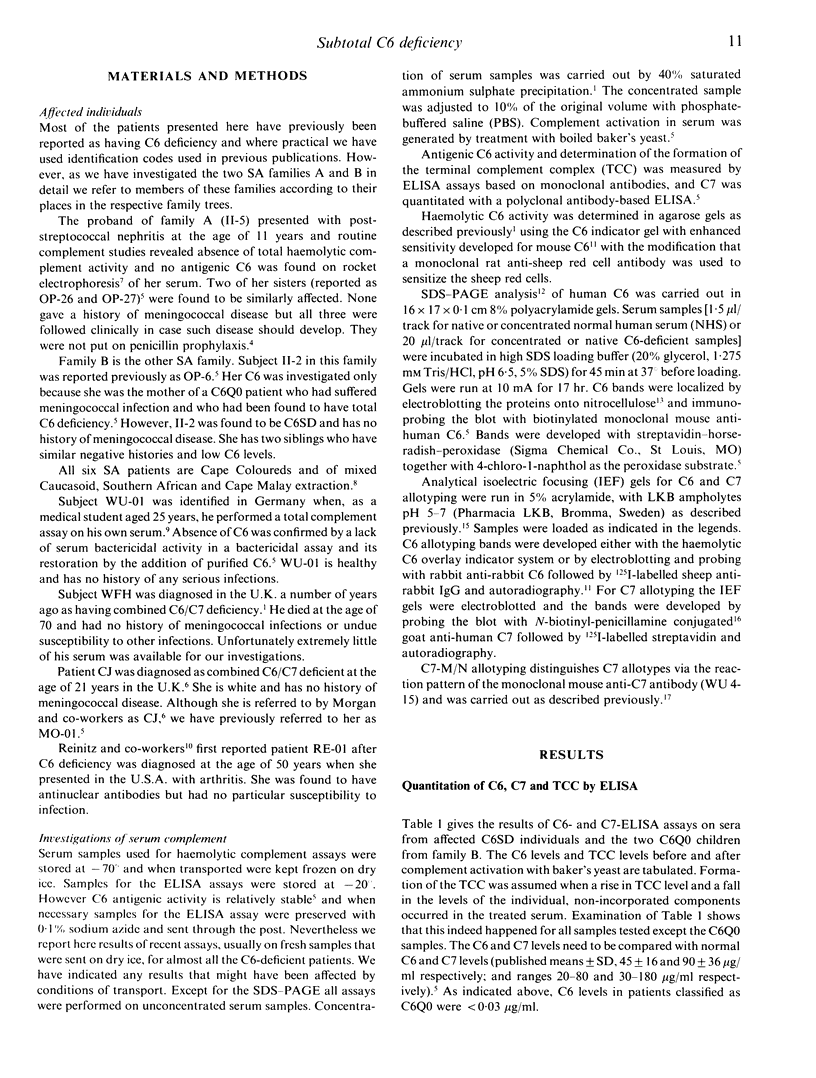
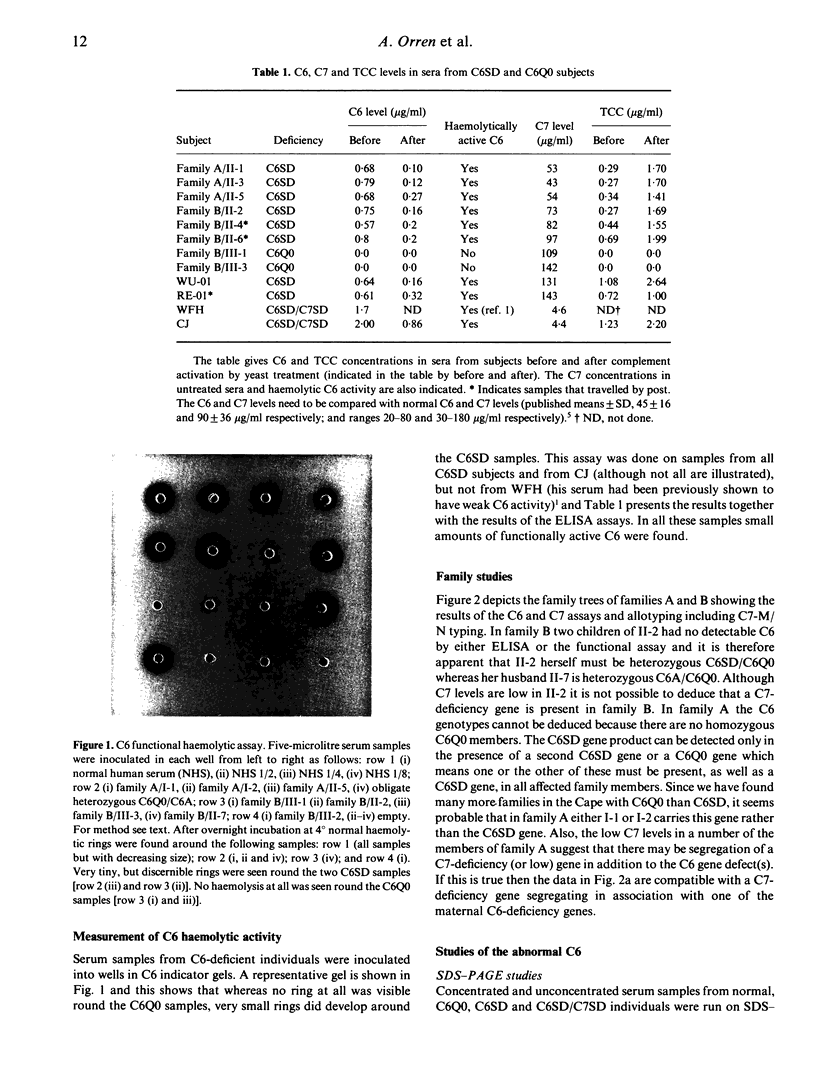
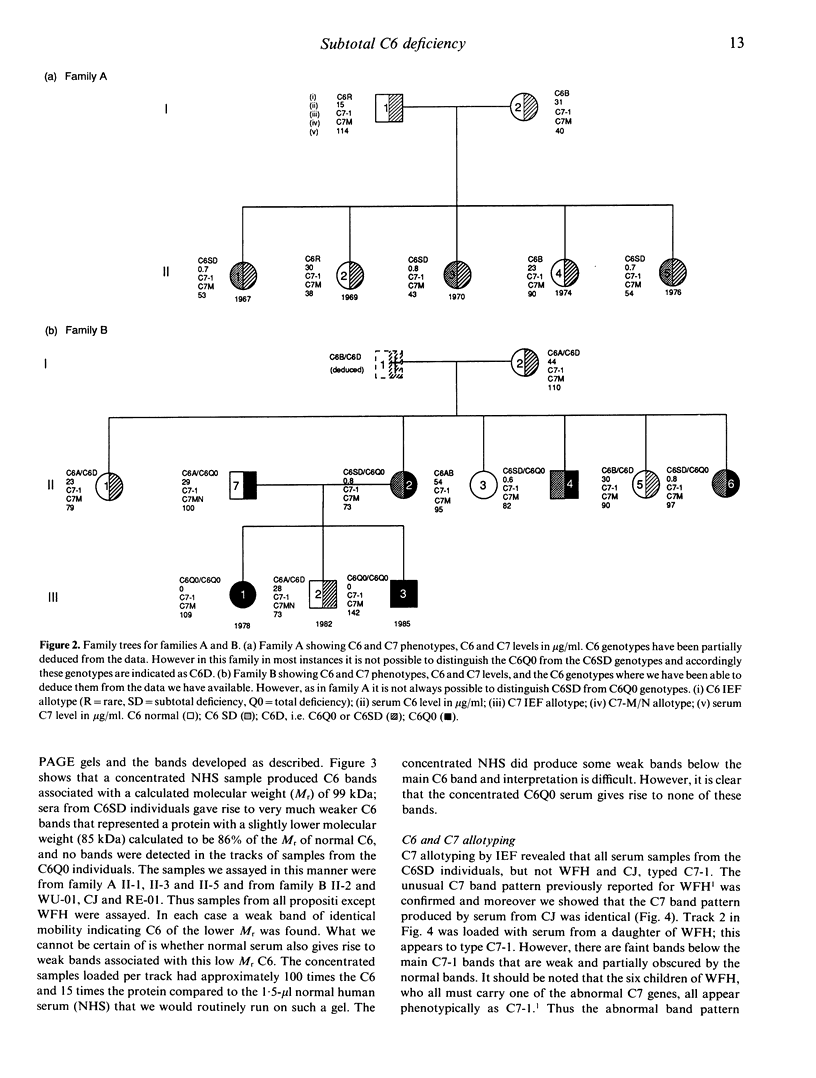
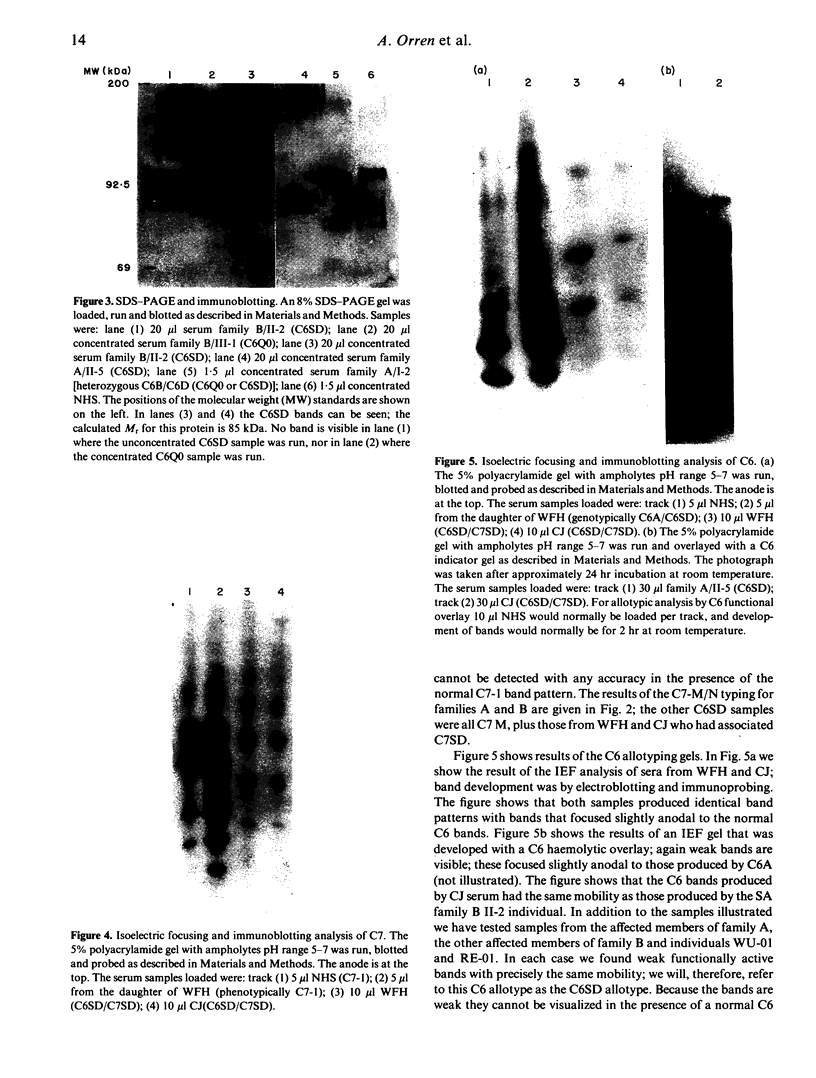
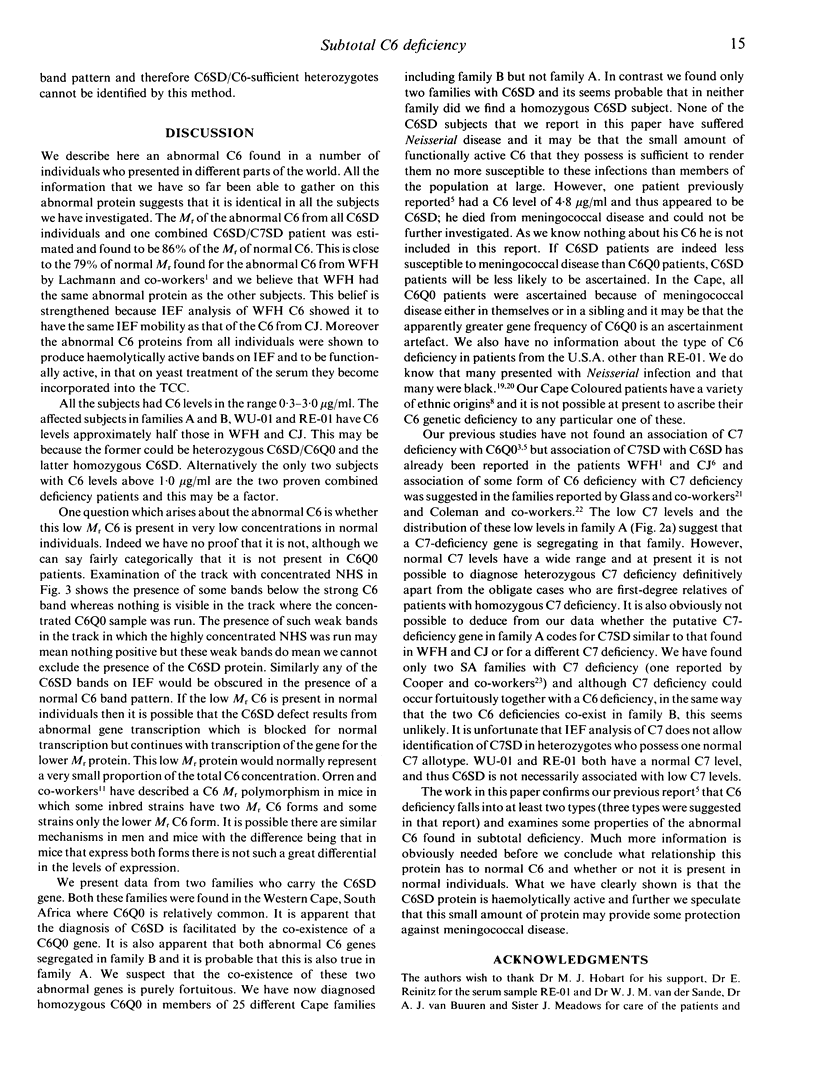
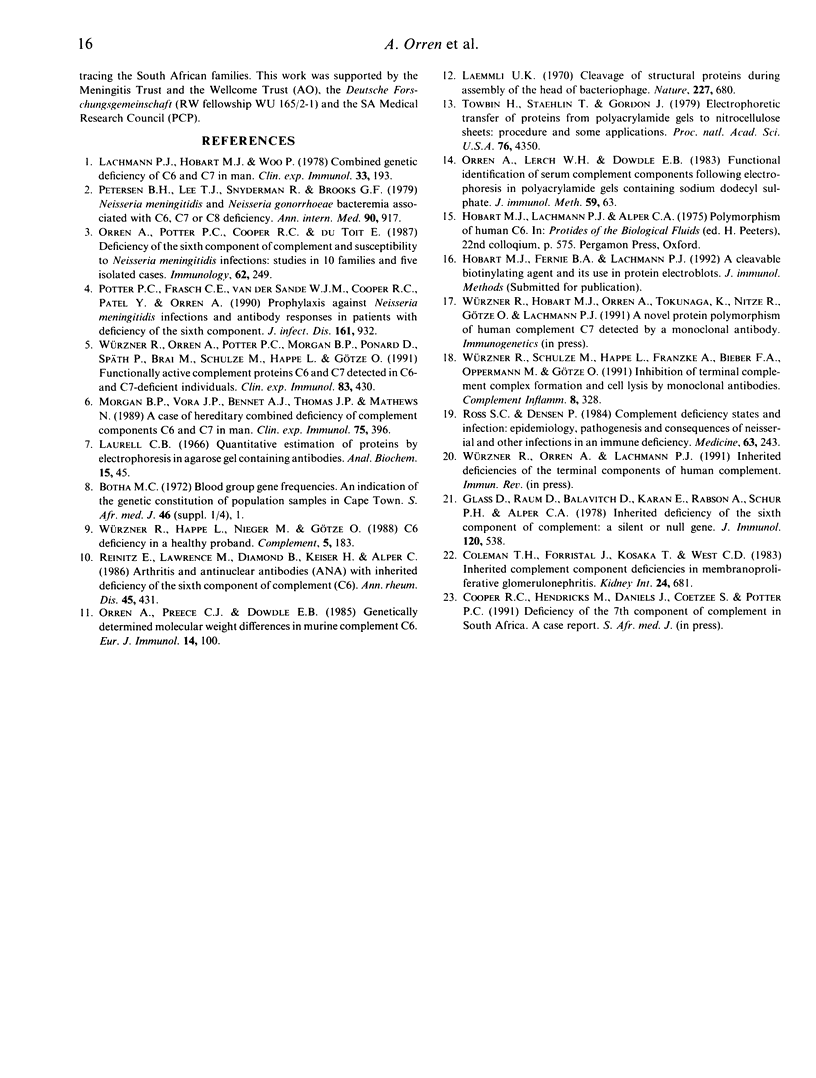
Images in this article
Selected References
These references are in PubMed. This may not be the complete list of references from this article.
- Coleman T. H., Forristal J., Kosaka T., West C. D. Inherited complement component deficiencies in membranoproliferative glomerulonephritis. Kidney Int. 1983 Nov;24(5):681–690. doi: 10.1038/ki.1983.211. [DOI] [PubMed] [Google Scholar]
- Glass D., Raum D., Balavitch D., Kagan E., Rabson A., Schur P. H., Alper C. A. Inherited deficiency of the sixth component of complement: a silent or null gene. J Immunol. 1978 Feb;120(2):538–541. [PubMed] [Google Scholar]
- Lachmann P. J., Hobart M. J., Woo P. Combined genetic deficiency of C6 and C7 in man. Clin Exp Immunol. 1978 Aug;33(2):193–203. [PMC free article] [PubMed] [Google Scholar]
- Laemmli U. K. Cleavage of structural proteins during the assembly of the head of bacteriophage T4. Nature. 1970 Aug 15;227(5259):680–685. doi: 10.1038/227680a0. [DOI] [PubMed] [Google Scholar]
- Laurell C. B. Quantitative estimation of proteins by electrophoresis in agarose gel containing antibodies. Anal Biochem. 1966 Apr;15(1):45–52. doi: 10.1016/0003-2697(66)90246-6. [DOI] [PubMed] [Google Scholar]
- Morgan B. P., Vora J. P., Bennett A. J., Thomas J. P., Matthews N. A case of hereditary combined deficiency of complement components C6 and C7 in man. Clin Exp Immunol. 1989 Mar;75(3):396–401. [PMC free article] [PubMed] [Google Scholar]
- Orren A., Lerch W. H., Dowdle E. B. Functional identification of serum complement components following electrophoresis in polyacrylamide gels containing sodium dodecyl sulphate. J Immunol Methods. 1983 Apr 15;59(1):63–71. doi: 10.1016/0022-1759(83)90146-1. [DOI] [PubMed] [Google Scholar]
- Orren A., Potter P. C., Cooper R. C., du Toit E. Deficiency of the sixth component of complement and susceptibility to Neisseria meningitidis infections: studies in 10 families and five isolated cases. Immunology. 1987 Oct;62(2):249–253. [PMC free article] [PubMed] [Google Scholar]
- Orren A., Preece C. J., Dowdle E. B. Genetically determined molecular weight differences in murine complement component C6. Eur J Immunol. 1985 Jan;15(1):100–103. doi: 10.1002/eji.1830150120. [DOI] [PubMed] [Google Scholar]
- Petersen B. H., Lee T. J., Snyderman R., Brooks G. F. Neisseria meningitidis and Neisseria gonorrhoeae bacteremia associated with C6, C7, or C8 deficiency. Ann Intern Med. 1979 Jun;90(6):917–920. doi: 10.7326/0003-4819-90-6-917. [DOI] [PubMed] [Google Scholar]
- Potter P. C., Frasch C. E., van der Sande W. J., Cooper R. C., Patel Y., Orren A. Prophylaxis against Neisseria meningitidis infections and antibody responses in patients with deficiency of the sixth component of complement. J Infect Dis. 1990 May;161(5):932–937. doi: 10.1093/infdis/161.5.932. [DOI] [PubMed] [Google Scholar]
- Reinitz E., Lawrence M., Diamond B., Keiser H., Alper C. Arthritis and antinuclear antibodies (ANA) with inherited deficiency of the sixth component of complement (C6). Ann Rheum Dis. 1986 May;45(5):431–434. doi: 10.1136/ard.45.5.431. [DOI] [PMC free article] [PubMed] [Google Scholar]
- Ross S. C., Densen P. Complement deficiency states and infection: epidemiology, pathogenesis and consequences of neisserial and other infections in an immune deficiency. Medicine (Baltimore) 1984 Sep;63(5):243–273. [PubMed] [Google Scholar]
- Towbin H., Staehelin T., Gordon J. Electrophoretic transfer of proteins from polyacrylamide gels to nitrocellulose sheets: procedure and some applications. Proc Natl Acad Sci U S A. 1979 Sep;76(9):4350–4354. doi: 10.1073/pnas.76.9.4350. [DOI] [PMC free article] [PubMed] [Google Scholar]
- Würzner R., Orren A., Potter P., Morgan B. P., Ponard D., Späth P., Brai M., Schulze M., Happe L., Götze O. Functionally active complement proteins C6 and C7 detected in C6- and C7-deficient individuals. Clin Exp Immunol. 1991 Mar;83(3):430–437. doi: 10.1111/j.1365-2249.1991.tb05656.x. [DOI] [PMC free article] [PubMed] [Google Scholar]
- Würzner R., Schulze M., Happe L., Franzke A., Bieber F. A., Oppermann M., Götze O. Inhibition of terminal complement complex formation and cell lysis by monoclonal antibodies. Complement Inflamm. 1991;8(5-6):328–340. doi: 10.1159/000463204. [DOI] [PubMed] [Google Scholar]



